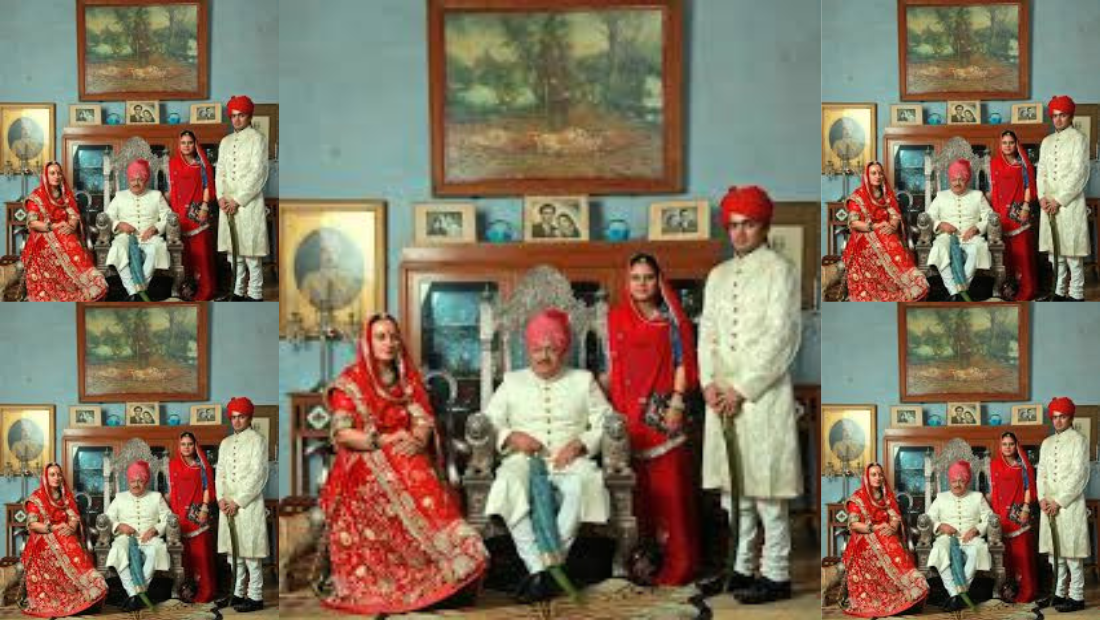Raja Krishnachandra Roy (1710–1783) held the prestigious title of Maharaja of Nadia and remains celebrated as one of the eminent figures from the illustrious Nadia Raj family. His enduring impact on Bengali literature, culture, and the Hindu society of Bengal is profound and indelible. Proficient in Sanskrit and Persian, he possessed a deep appreciation for music, reflecting his diverse intellectual interests.
Known for his staunch protective stance, Raja Krishnachandra emerged as a pivotal patron of luminaries like Ramprasad Sen, the revered poet behind the Anandamangal Kavya, and the ingenious Gopal Vyar, who played instrumental roles in nurturing Bengal’s renowned talent pool. The very creation of Anandamangal Kavya, a significant literary work, bore witness to his esteemed royal court’s patronage.
Under his auspices, the terracotta art of Krishnanagar reached unprecedented heights, marking a flourishing period in its history. Raja Krishnachandra’s legacy endures as a testament to his profound contributions to literature, culture, and the artistic heritage of Bengal.
Raja Krishnachandra Roy Family
Krishnachandra Roy, hailing from a Brahmin lineage, was born to Raghuram Roy. The Roy family’s prestigious standing traces back to his grandfather, Parasuram Banarjee, who earned the epithet “Roy Roy” for his commendable service during the reign of Mughal emperor Aurangzeb. This distinguished title was later condensed to form the enduring family name, Roy. Krishnachandra was blessed with three sons: Hari Prasad, Amar Chandra, and Brajabinode Roy.

Ascending to the esteemed positions of Raja and Zamindar of Nadia, Krishnachandra played a pivotal role in shaping the annals of Bengal’s history. A scion of the revered Nadia Raj family, he adhered to the Shakta Hindu tradition. His influence transcended mere resistance to Mughal dominion; he ardently championed and fostered the arts within his realm. Throughout his reign, he left an indelible mark on Hindu religious customs, notably addressing the contentious issue of widow remarriage. Despite facing staunch opposition, Krishnachandra remained steadfast in his principles.
Legends intertwine his name with the popularization of the worship of the goddess Jagaddhatri. One narrative recounts Durga’s apparition to him in the form of Jagaddhatri, urging him to venerate her, which led to the creation of a revered statue of the goddess.
Krishnachandra’s court shimmered with luminaries such as the poet Bharatchandra Ray and the venerable Sadhak Ramprasad Sen. Additionally, he was associated with a faction that plotted against Siraj ud-Daulah, a move that significantly contributed to the British triumph in the Battle of Plassey and the subsequent establishment of British dominion in India.
Raja Krishnachandra wife
Rani Bhabani, the esteemed wife of Raja Krishnachandra, emerged as a pivotal figure in the propagation of Sanskrit culture throughout Bengal. Her unwavering support became the cornerstone for scholars, artisans, and various cultural ventures during their reign.
The epoch of Raja Krishnachandra was characterized by a blend of political sway and cultural exuberance. His enduring contributions echo through the annals of time, etching an unforgettable legacy onto the canvas of Bengal’s history and heritage.
Raja Krishnachandra Mantri name
Krishnachandra Roy was born into a Brahmin family, the son of Raghuram Roy. During the reign of Mughal emperor Aurangzeb, his grandfather Parasuram Banarjee gained renown for his service, earning the epithet “Roy Roy,” which later morphed into the family name, Roy. Krishnachandra was blessed with three sons: Hari Prasad, Amar Chandra, and Brajabinode Roy.
Assuming the esteemed titles of Raja and Zamindar of Nadia, Krishnachandra played a pivotal role in shaping Bengal’s history. Belonging to the illustrious Nadia Raj family and following the Shakta Hindu tradition, his influence transcended mere resistance to Mughal rule. He actively fostered and supported the arts within his domain, leaving an enduring legacy.
Krishnachandra’s impact extended to Hindu religious practices, including the contentious issue of widow remarriage, where he steadfastly upheld his convictions despite opposition. Legends also attribute to him the popularization of the worship of the goddess Jagaddhatri. According to one tale, Durga manifested to him in the form of Jagaddhatri, instructing him to venerate her, leading to the creation of a revered statue.
His court attracted luminaries like the poet Bharatchandra Ray and the revered Sadhak Ramprasad Sen, adding further luster to his reign. Additionally, Krishnachandra was associated with a faction that conspired against Siraj ud-Daulah, a move that significantly contributed to the British victory in the Battle of Plassey and the subsequent establishment of British rule in India.
Raja Krishnachandra Death Reason
Raja Krishnachandra, originally known as Krishnachandra Ray (1710–1783), held the esteemed position of a raja and zamindar in Nadia from 1728 to 1782. His influence transcended mere governance, as he actively nurtured and advocated for the arts within his domain. Let’s explore some captivating facets of his life:
Championing Tradition Against Widow Remarriage Prohibition:
Krishnachandra wielded considerable influence in shaping Hindu religious customs. When Raja Rajballabh Sen of Bikrampur sought his support to challenge the prohibition on widow remarriage following the premature loss of his daughter’s husband, Krishnachandra’s pundits were consulted.
However, Krishnachandra vehemently opposed this reform. To underscore his stance, he arranged for his guests to be served the meat of a buffalo calf. The offended guests declined the offering, signifying that while not explicitly forbidden, it contravened tradition. With Krishnachandra’s staunch opposition, Rajballabh’s endeavor for change faltered.
Clash with Diwan Manikchandra:
Another narrative recounts a clash between Krishnachandra’s diwan, Raghunandan, and Manikchandra, who later ascended to the position of raja. Following a dispute, Manikchandra accused Raghunandan of theft and possessed the authority to decree his execution. The discord may have stemmed from Manikchandra’s resentment towards Krishnachandra’s patronage of the poet Bharatchandra, who had slighted the Burdwan raj family. Krishnachandra’s court became entangled in this conflict.
Propagating Worship of Goddess Jagaddhatri:
Legend has it that Krishnachandra missed the observance of Durga Puja due to captivity by Muslims. In a vision, Durga appeared to him in the guise of Jagaddhatri, instructing him to establish her worship within a month. Krishnachandra promptly commissioned a sculptor to fashion a deity of the goddess, thereby popularizing the veneration of Jagaddhatri. Bharatchandra Ray, Krishnachandra’s court poet, played a pivotal role in this episode.
Role in British Ascendancy:
Krishnachandra was involved in a coalition against Siraj ud-Daulah, collaborating with Robert Clive. This union culminated in Siraj ud-Dullah’s defeat in the Battle of Plassey and the subsequent establishment of British dominion in India.
Krishnachandra Roy’s diverse life left an enduring imprint on the annals of Bengal’s history and cultural tapestry.


This article is very helpful for all people. I hope like anyone this article writing skill.